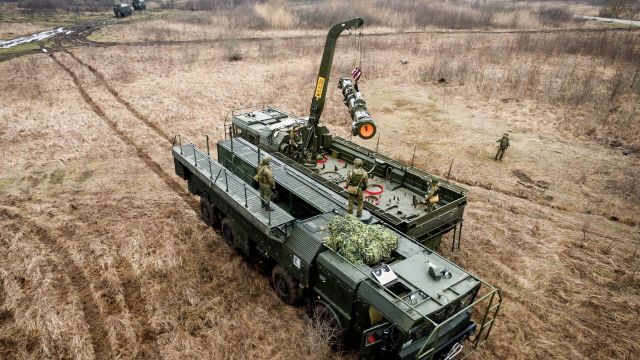And how can the latest weapons system protect Russia's western bordersThis week, the calculations of the Iskander-M tactical missile systems (OTRK) from Belarus went to Russia for training.
One of its probable directions may be training in the use of missiles with nuclear charges. The Belarusian army received Iskanders-M last year, and the nuclear arsenal is planned to be deployed in the country in the coming months. If necessary, Russian nuclear warheads can be installed on Belarusian Iskanders. Izvestia investigated what the capabilities of this missile system are and what potential it has in the current configuration of the Ukrainian conflict.
Contractual obligations
The 9K720 Iskander-M missile system owes its appearance to the Treaty on the Limitation of Medium- and Short-Range Ballistic Missiles (INF), which was concluded between the USSR and the USA in 1987, and the chief designer of the Design Bureau of Mechanical Engineering (KBM) from Kolomna, Sergei Invincible.
When it became clear that maybe several promising missile programs would go under the knife at once, Invincible did not give up, but insisted on creating a missile system with a range of up to 500 km.
The developments of the KBM on several missile systems were used, which were to replace such complexes as Tochka and Oka. For its time, the "Dot" was an advanced achievement of rocket science — the combat vehicle of the complex could quickly arrive at the launch point, perform aiming, strike and immediately leave the area.
The use of a small-sized solid-fuel rocket ensured high reliability of the complex and ease of maintenance. There was only one disadvantage: two missiles were required to guarantee the destruction of the target with conventional ammunition, taking into account the likely deviation from the aiming point.
The new Iskander missile system was to replace the 9K72 SCUD missile systems with liquid-fueled missiles with a range of up to 300 km in the troops and complement the solid-fuel "Dots". The launcher of the new complex was supposed to carry two missiles with higher accuracy and could actually replace an entire 9K72 battery.
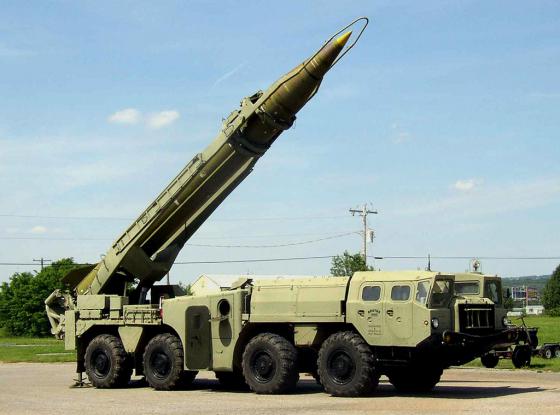 |
| Operational-tactical missile system 9K72 Elbrus. Source: snariad.ru . |
The self-propelled launcher became heavier, and unlike the "Dot", it was planned to make it not floating. The rocket and the complex were supposed to implement innovative technological solutions at that time: the implementation of topographic binding of the launcher at any point of the route, obtaining target designation from external sources of information in real time, re-targeting of the missile after launch, the use of homing heads at the final stage of the trajectory, the minimum radar visibility of the missile and a set of measures to overcome the potential missile defense of the enemy.
It was also planned to develop a system for entering data into the missile control system inside the launcher before moving to the starting position — the latter has already been implemented on the Temp-2S strategic mobile complexes and in the Tochka complex.
The rocket of the revolutionary complex had to be controlled on the entire flight path. The new complex was to take a place between the "Dot-U" and "Okoy-U" in a number of short-range missile systems by the end of the 1980s. But then the treaty on the limitation of medium- and short-range missiles, signed by the USA and the USSR in 1987, happened.
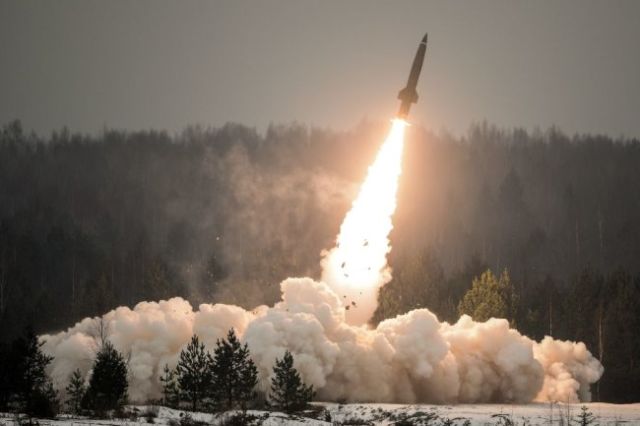 |
| Launch of the operational-tactical missile "Tochka-U". |
| Source: rg.ru |
The INF has put an end to several classes of missile systems, including the Oka, Oka-U complexes and the newest Volga complex. It was at this time in the Design Bureau of Mechanical Engineering (Kolomna), on an initiative basis and by order of the Invincible, the creation of a new missile system with a reduced range was started. And in 1988, the USSR Council of Ministers issued a resolution on financing the creation of the 9K715 Iskander complex with the 9M723 ballistic missile.
Taking into account the extensive experience of the Engineering Design Bureau in the creation of such complexes, already in 1991, the first launches of rocket prototypes were launched at the Kapustin Yar test site. On October 25, 1995, the newspaper Krasnaya Zvezda announced the completion of tests of the Iskander missile system.
In the late 1990s, the complex was redesigned for the use of new launchers on the Minsk chassis MZKT-7930 "Astrologer". Work was also underway on other components. Finally, in the early 2000s, there was a modern concept of a modernized and improved 9K720 Iskander-M missile system, which was noticeably different from the old one.
The new Iskander-M became the first domestic modular multifunctional missile system of the ground forces. He could use completely different technically missiles — ballistic 9M723 and cruise 9M728.
The peculiarity is that Iskander-M could launch these missiles with the same installations and means of combat control. Thus, the foundation was laid for the creation of a system that could solve not only the tasks of an army operation, but also have strategic capabilities in the event of the termination of the INF treaty.
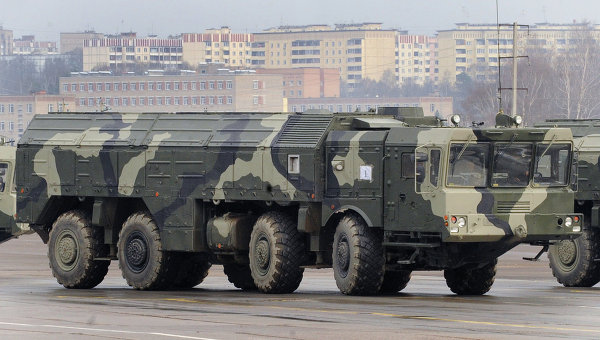 |
| Launcher 9P78-1 based on MZKT-79301. |
| Source: http://only-paper.ru/ |
Tests of the 9M723 ballistic missiles of the Iskander-M complex were conducted in 1999-2004, and in May 2007, the first launch of the 9M728 cruise missile was carried out from the 9P78 launcher of the Iskander-M complex.
The 9K720 Iskander-M complex with the 9M723 ballistic missile was adopted by the Russian army in 2004, in 2005 it began to enter missile brigades. In 2010, mass production of Iskander-M was launched to replace the Tochka-U complexes in missile brigades. The rearmament of the ground forces was completed at the end of 2021 — 13 missile brigades and the 630th separate missile division were equipped with 9K720 Iskander-M complexes.
The best of its kind
What are the capabilities of the Iskander-M missile system? It can work as part of a reconnaissance and strike complex, receiving information about targets in real time and hitting them within minutes after detection by intelligence. Digital systems for transmitting information about targets and computer preparation of flight tasks minimize the preparation time for a missile strike.
Ballistic missiles of the 9M723 complex have a range of up to 480 km and, as we now know, can carry a low-power cluster, high-explosive or nuclear warhead (from 5 to 50 kilotons). The targets for such a missile can be concentrations of enemy military equipment, headquarters, air bases, ports, anti-aircraft and anti-missile systems.
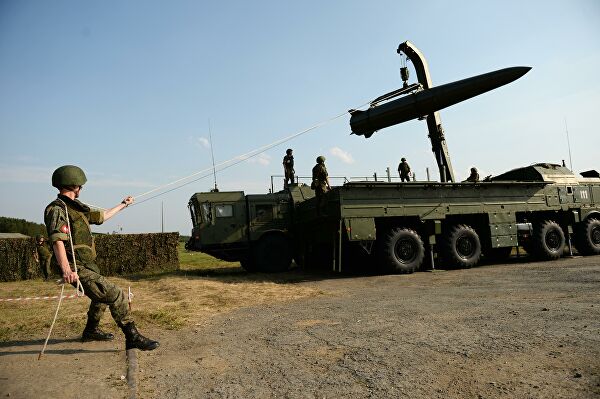 |
| Deployment of the Iskander-M tactical missile system. |
| Source: © RIA Novosti / Pavel Lisitsyn |
It is almost impossible to shoot down the 9M723 missile: an inconspicuous body, small dimensions, high speed, the possibility of an anti-missile maneuver and a set of means to overcome missile defense in the form of false targets produced at the final stage of the flight. Given the high accuracy of the 9M723, even in conventional equipment, it can destroy almost any target. In nuclear equipment, there are simply no restrictions on the types of targets.
In the early 2000s, information appeared that Iskanders could be exported as a variant of the 9K720E Iskander-E. It was shown at various exhibitions, and such displays were accompanied by negotiations on possible deliveries. The export version of the Iskander has a range limit of up to 300 km.
In 2004-2010, the media reported on negotiations over the supply of Iskander-E to Syria, India, Iran, Kuwait, Malaysia, Vietnam, Singapore and even South Korea. Such traditional partners of the Russian Federation in military-technical cooperation as Algeria, Kazakhstan and Belarus have also shown interest in Iskanders.
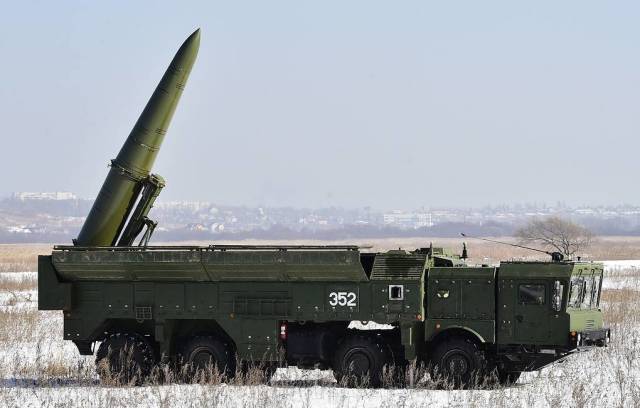 |
| Calculations of operational-tactical missile systems "Iskander-M". |
| Source: © Yuri Smityuk/TASS |
Belarus even offered to independently assemble complexes with Russian missiles — launchers for Iskanders use Minsk chassis, and technically it is possible to prepare combat vehicles of the complex in the workshops of the MZKT.
In 2022, Belarus received the first division of missile systems. It is not disclosed how many Iskander-E will be transferred to the ally, but given the expansion of NATO, Russia will obviously need the support of Belarusian complexes. It is likely that two or three new Iskander-M missile brigades will also be deployed in the western regions of Russia.
Iskanders are directly involved in a special military operation on the territory of Ukraine. Now it is one of the most "indestructible" missile systems, which, like the aviation "Dagger", works only for important and responsible purposes.
Dmitry Kornev
